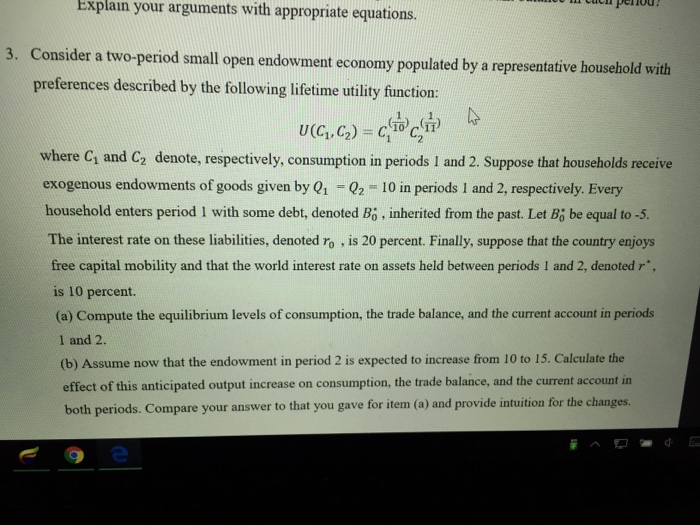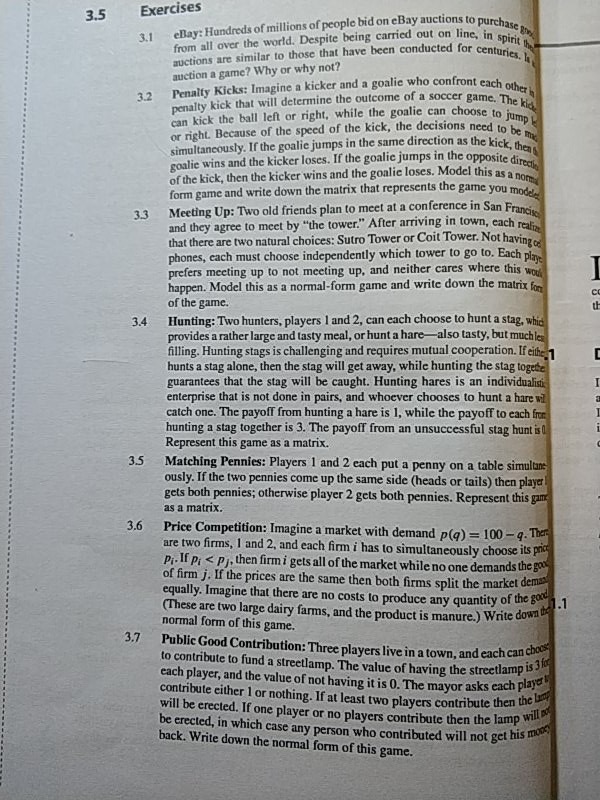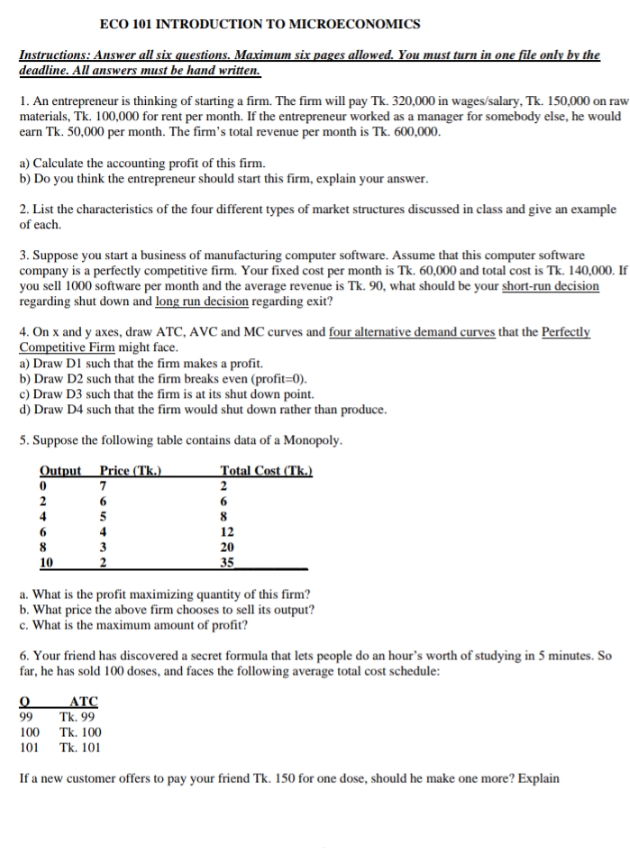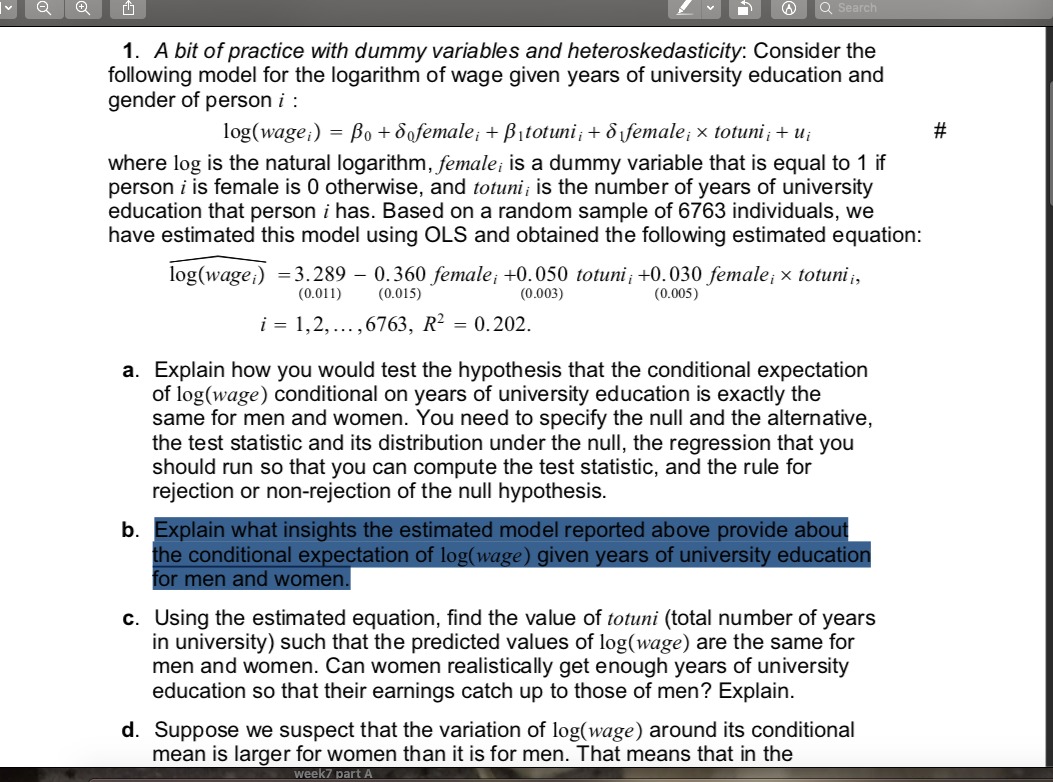



. Explain the following attachments.
Explain your arguments with appropriate equations. 3. Consider a two-period small open endowment economy populated by a representative household with preferences described by the following lifetime utility function: U(C, 62) - C. TO CH) where C, and C2 denote, respectively, consumption in periods 1 and 2. Suppose that households receive exogenous endowments of goods given by Q, - Q2 - 10 in periods 1 and 2, respectively. Every household enters period I with some debt, denoted Bo , inherited from the past. Let B; be equal to -5. The interest rate on these liabilities, denoted ro , is 20 percent. Finally, suppose that the country enjoys free capital mobility and that the world interest rate on assets held between periods I and 2, denoted r", is 10 percent. (a) Compute the equilibrium levels of consumption, the trade balance, and the current account in periods 1 and 2. (b) Assume now that the endowment in period 2 is expected to increase from 10 to 15. Calculate the effect of this anticipated output increase on consumption, the trade balance, and the current account in both periods. Compare your answer to that you gave for item (a) and provide intuition for the changes. 9 e3.5 Exercises cBay: Hundreds of millions of people bid on eBay auctions to pure to purchase gory from all over the world. Despite being carried out on line, in spirit auctions are similar to those that have been conducted for centuries. I auction a game? Why or why not? 3.2 Penalty Kicks: Imagine a kicker and a goalie who confront each other penalty kick that will determine the outcome of a soccer game. The kid can kick the ball left or right, while the goalie can choose to jump or right. Because of the speed of the kick, the decisions need to be my simultaneously. If the goalie jumps in the same direction as the kick, then goalie wins and the kicker loses. If the goalie jumps in the opposite directs of the kick, then the kicker wins and the goalie loses. Model this as a norms form game and write down the matrix that represents the game you models 3.3 Meeting Up: Two old friends plan to meet at a conference in San Francisco and they agree to meet by "the tower." After arriving in town, each realize that there are two natural choices: Sutro Tower or Coit Tower. Not having of phones, each must choose independently which tower to go to. Each plays prefers meeting up to not meeting up, and neither cares where this work happen. Model this as a normal-form game and write down the matrix for of the game. 3.4 Hunting: Two hunters, players I and 2, can each choose to hunt a stag, which provides a rather large and tasty meal, or hunt a hare-also tasty, but much les filling. Hunting stags is challenging and requires mutual cooperation. If eithe-1 hunts a stag alone, then the stag will get away, while hunting the stag togete guarantees that the stag will be caught. Hunting hares is an individualist enterprise that is not done in pairs, and whoever chooses to hunt a hare wil catch one. The payoff from hunting a hare is 1, while the payoff to each for hunting a stag together is 3. The payoff from an unsuccessful stag hunt is ( Represent this game as a matrix. 3.5 Matching Pennies: Players I and 2 each put a penny on a table simultane ously. If the two pennies come up the same side (heads or tails) then player gets both pennies; otherwise player 2 gets both pennies. Represent this game as a matrix. 3.6 Price Competition: Imagine a market with demand p(q) = 100 -q. There are two firms, I and 2, and each firm i has to simultaneously choose its price pi. If pi














